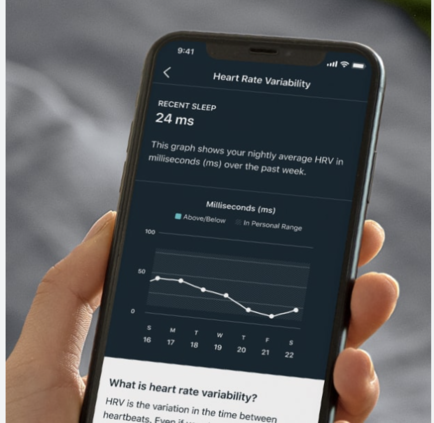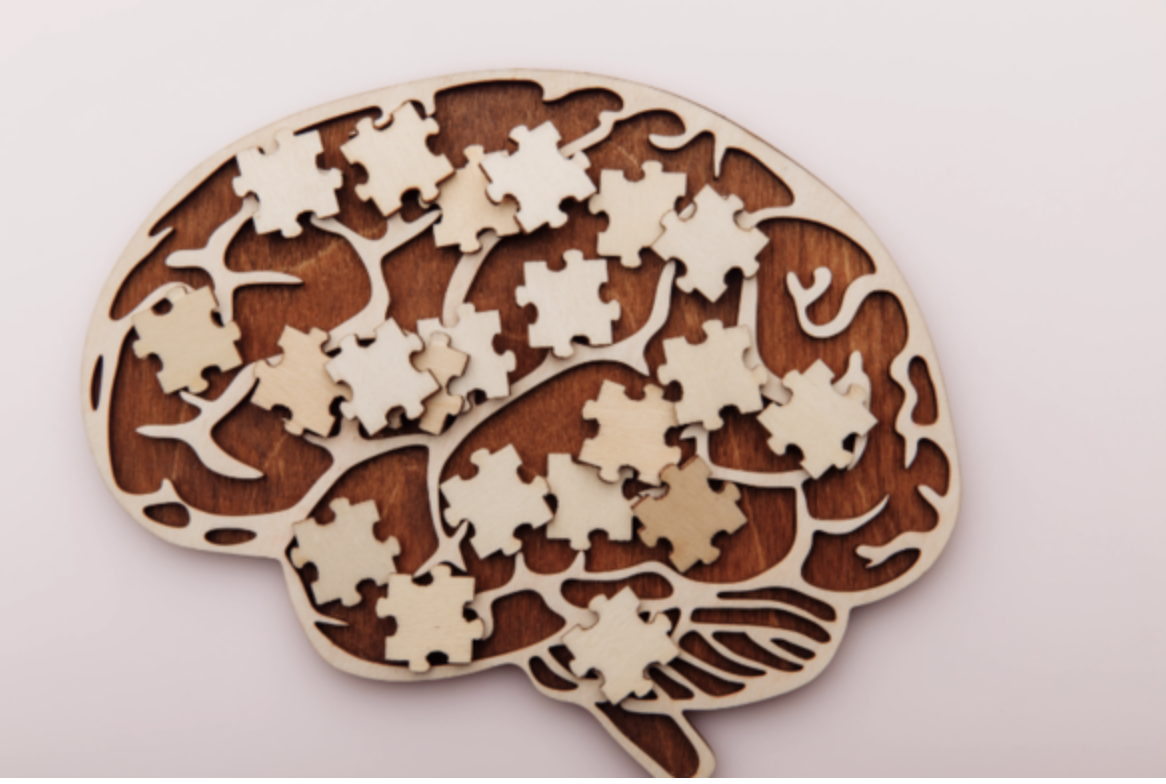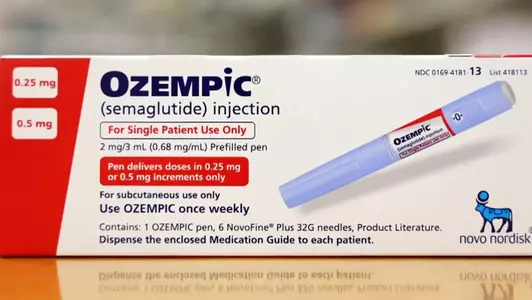What does "high blood sugar" really mean?, 8,000 steps identified as the ideal daily target, What is CalmStone?, What can you do about your heart rate variability (HRV)?, Novel Alzheimer's drug shows promising Phase 2 trial results,
The Full Panel meets your TLDR (Too Long; Didn’t Read) needs by delivering the latest medicine & health news in a nutshell. 🥜
What does "high blood sugar" really mean? Is it just what you eat?

Gist: Dr. Kaberi Dasgupta, a professor at McGill University, aims to correct misconceptions about blood sugar levels. She emphasizes that high blood sugar is often due to excess weight and inactivity, not just sugar consumption. Dietitians suggest a balanced diet rich in fiber and protein to avoid blood sugar spikes. Regular testing for blood sugar levels, a nutritious diet, and exercise are key in managing and preventing diabetes.
Nitty-Gritty: People often mistakenly attribute high blood sugar solely to sugar intake, but Dr. Dasgupta points to overweight and lack of exercise as more significant factors. Blood glucose targets vary by age, and home glucometers can help monitor levels. High-risk individuals should get tested frequently. Foods with lower glycemic indexes are better for stabilizing blood glucose. Small, frequent meals and a consistent eating schedule can prevent fluctuating blood sugar levels. Dietitians advise against completely eliminating sugar but recommend replacing processed sugars with nutrient-rich alternatives.
Big Picture: Diabetes is a critical health issue in Canada, with a large portion of the population affected by or at risk for diabetes. Proper blood sugar management can prevent severe complications such as kidney disease and vision loss. Lifestyle choices, including diet and physical activity, play a pivotal role in diabetes prevention and control. Exercise is essential, with 150 minutes per week and resistance training recommended. Starting healthy habits early in life can significantly reduce the risk of developing type 2 diabetes, akin to investing early for a secure retirement. Stress and sleep are additional factors influencing blood sugar levels.
Original source: here.
A study pinpointed that 8,000 steps as the optimal daily target🚶🏽

Gist: An international research team, spearheaded by the University of Granada, has demystified the long-held belief that 10,000 daily steps are necessary for health benefits. This study pinpointed 8,000 steps as the optimal daily target for significantly reducing the risk of premature death, especially from cardiovascular diseases, and highlighted the additional advantages of a brisk walking pace.
Nitty-Gritty: This granular study, which scrutinized data from over 110,000 participants across twelve studies. The researchers found that reaching 7,000-9,000 steps is an attainable goal for most and provides substantial health benefits. Notably, they advocate that for those with lower physical activity levels, even a modest increase of 500 steps daily can yield health improvements. Moreover, the study suggests that the benefits of walking are not contingent on gender and that walking speed matters, with faster paces linked to lower mortality risk.
Big Picture: By replacing the arbitrary 10,000-step goal with a scientifically backed 8,000-step target, the researchers align physical activity guidelines with accessible, measurable outcomes. They assert that more steps are better, with even 16,000 steps a day showing no adverse health risks. The findings endorse a pragmatic approach to physical activity, encouraging individuals to progressively increase their daily steps. Additionally, this study underscores the practicality of step counting in meeting the broader physical activity recommendations of 150-300 minutes of moderate-intensity exercise per week, leveraging the ubiquity of smartphones and wearable technology for health improvement.
Original source: here.
What is CalmStone, and can it help lessen anxiety and pain?

Gist: Recent research introduced at the Lifestyle Medicine 2023 conference suggests that a new portable tool, the CalmStone, may help lessen anxiety, alleviate pain, and improve sleep quality through biofeedback techniques involving blood flow and temperature changes in the hand.
Nitty-Gritty: Franklin Somchith Ly, a mechanical engineering PhD candidate from UC Santa Barbara, is behind the CalmStone device, which uses an infrared temperature sensor to detect blood flow changes. The tool’s color changes signal relaxation during activities like breathwork and muscle relaxation. The study involved participants engaging in sessions to evaluate the effects on anxiety, sleep, and chronic pain. Anxiety decreased by 22%, sleep quality improved by 30%, and around 60% of biofeedback sessions led to less pain.
Big Picture: The CalmStone has the potential to be a practical device for managing lifestyle-related health issues. It may complement current practices in lifestyle and integrative medicine by offering a convenient, non-pharmaceutical approach to managing anxiety and pain, and by promoting better sleep and daytime functioning. Despite promising results, the research had limitations such as a lack of control groups and being open label, indicating a need for more rigorous trials. Franklin Ly's dual role as researcher and founder of CalmStone, alongside funding from notable organizations, suggests a significant interest in the tool's future application and effectiveness.
Original source: here.
Many Smartwatches read heart rate variability (HRV), but what can you actually do with that measurement?

Gist: The discussion revolves around Heart Rate Variability (HRV) as a potential indicator of overall health, much like how ESR (erythrocyte sedimentation rate) and CRP (C-reactive protein) blood tests historically signaled infection or inflammation. With many people using smartwatches that measure HRV, questions arise about the best ways to utilize these readings.
Nitty-Gritty: HRV measures the time variation between heartbeats, affected by the autonomic nervous system, and is believed to reflect sympathetic and parasympathetic balance. Fitness trackers often include HRV but advise against using the data for medical purposes. HRV normally decreases with age. The article's author reflects on personal HRV data observed through a Fitbit, particularly noting significant HRV changes after vaccination and during illness, suggesting a possible correlation with immune response.
Big Picture: The author suggests HRV might serve as a screening tool, indicating changes in health status, but emphasizes the need for proper research to validate this. Meanwhile, individuals are encouraged to maintain healthy lifestyles, which could positively affect HRV. The author's personal experience suggests a temporary HRV decrease following vaccination, which might indicate an increased immune response, but also cautions against conflating correlation with causation. The broader implication is that while HRV tracking might hold potential for monitoring health, it requires more study to understand its utility fully.
Original source: here.
A novel drug aimed at treating Alzheimer's disease (AD), has shown some potential in a phase 2 trial

Gist: T3D-959, a novel drug aimed at treating Alzheimer's disease (AD), has shown some potential in a phase 2 trial, despite not meeting the primary cognitive endpoints for the overall study population. It was observed to be more effective in participants with a higher pTau-217/non-pTau-217 ratio (biomarkers for Alzheimer's), suggesting it may benefit a subset of AD patients. The drug's unique action as a dual PPAR delta/gamma agonist (i.e., it's drug class) targets brain glucose and lipid metabolism dysfunctions related to AD.
Nitty-Gritty: In the PIONEER study, 250 adults with mild-to-moderate Alzheimer's were given varying doses of T3D-959 or a placebo for 24 weeks. The primary endpoints using cognitive scales were not achieved overall. However, participants with higher pTau-217 ratios showed cognitive benefits from the 30-mg dose, also exhibiting biomarker improvements. These findings suggest a connection between the drug's metabolic actions and AD pathologies.
Big Picture: This study expands on the concept that Alzheimer's may be an age-related metabolic disease, and metabolic regulation could be key in its treatment. The research highlighted the importance of selecting participants with biomarkers indicating AD pathology for more accurate trial outcomes. Future studies will focus on refining the dosing and participant screening based on these insights, as the search for effective Alzheimer's treatments continues among over 140 different approaches currently under investigation.
Original source: here.
A class action lawsuit has been filed against Novo Nordisk, the manufacturer of Ozempic

Gist: A class action lawsuit has been filed against Novo Nordisk, claiming that the company did not provide sufficient warnings about severe side effects of its diabetes and weight loss drugs, Ozempic, Rybelsus, and Wegovy. Patients have reported intense vomiting, gallstones, and food obstruction due to these medications, with some alleging permanent damage such as stomach paralysis.
Nitty-Gritty: The lawsuit highlights that patients were not adequately informed about the potential for serious, long-term complications from drugs like Ozempic, which contains the active ingredient semaglutide. This substance mimics a hormone that decreases blood sugar and suppresses appetite, leading to its off-label use for weight loss. More than 3.5 million prescriptions for Ozempic were dispensed in Canada in 2022 alone. However, reports suggest an increased risk of pancreatitis and bowel obstruction with these medications.
Big Picture: This legal action underscores a broader issue with drug safety communication and informed consent. It reflects the struggles of individuals managing chronic conditions like Type 2 diabetes, which affects millions and poses significant health risks if not properly controlled. The case raises concerns about how off-label drug use is monitored and communicated to patients, as well as the need for greater transparency regarding drug side effects to ensure patient safety and informed health decisions.
Original source: here.
Interested in previous newsletters or other articles we’ve published? Check them out here at: thefullpanel.com
Got a question for us? Suggestions for content you’d like to see? Feedback? E-mail us at: hello@mail.thefullpanel.com
